The story goes like this. Two young enlisted men in their early twenties were tasked with operating a nuclear reactor in the Lost River Desert of Idaho. They were not scientists or engineers. They lacked college degrees. They were graduates of a crash course in how to operate a nuclear reactor that took eight months to complete.
They arrived in Idaho with grand dreams of one day overseeing a full scale nuclear power plant. The year was 1959, and the nuclear power industry was in its infancy.
Two dozen experimental reactors dotted the floor of the Idaho desert. They were part of the National Reactor Testing Station established to develop and refine nuclear reactors with the idea of one day using them to generate nuclear power.
The two young men arrived to an atmosphere of heady optimism, a feeling of being on the verge of something spectacular. Cheap, easily available energy promised to be the solution to the world’s problems. Nuclear power, it was believed, would bridge the gap between rich and poor and wipe away poverty. Construction workers, engineers, physicists and operators converged on the Idaho desert to make history and change the world. They took up residence fifty miles away in Idaho Falls or at fledgling new communities nearer the Station. One such community was Atomic City.
Ghost Town
Sixty years later, I turned off highway 26 and drove the mile long dirt road to what remained of Atomic City. At its peak in 1961 Atomic City had a population of 141. To call it a city was a stretch even then, but a mark of the optimism of the time. It had once been home to officers and personnel who worked at the Testing Station. Now it was a crumbling ghost town. Two months before I arrived it had disincorporated. Derelict buildings gaped out at the surrounding landscape like empty skulls: an abandoned gas station, a forsaken bar, a handful of tumbled down houses. What had happened here? Where had everybody gone?
Most people think the world’s first nuclear disaster happened at Three Mile Island in 1979. They are wrong. The world’s first nuclear disaster happened in 1961 at the National Reactor Testing Station, at the SL-1 experimental reactor, five miles from Atomic City.
A Combination That Didn’t Sit Well
Dick Legg was one of the two young men who arrived at the Testing Station in 1959, one of the two young men whose lives were to become so bound up in what was about to happen. Legg was 5 foot six and muscular. He had a pouty lower lip and a mole by his left nostril. He was not conventionally attractive, but he was something of a cut up, a prankster, and people liked him—when he wasn’t too annoying. At the age of twenty five he had the boisterous energy of a young man newly arrived in a place with such boundless possibilities.
Jack Byrnes was a newly married twenty-year-old army mechanic with an adventurous spirit. Naturally athletic, he enjoyed skiing, archery and competitive sports. In addition, he had weakness for fast women and late nights in bars, a combination that didn’t sit well with his intense, brooding nature and his hair-trigger temper. He had been in his share of dust ups.
Both men were cocky and disinclined to back down, and both were quite sure they had punched their tickets when they’d completed the eight month training course and were assigned to reactor SL-1 at the National Reactor Testing Station. But the reality was different than what they’d imagined.
Prompt Critical
The SL-1 was not glamorous. It looked like a grain silo adjoined by two metal buildings in a gravel parking lot surrounded by a chain-link fence. It was in fact a prototype for a series of portable reactors the army was hoping to build. The idea was to airlift the component parts to remote locations like the Arctic where they could be easily assembled and operated by a team of just two or three men.
Accordingly, the SL-1 was the smallest of the two dozen reactors in the Lost River Desert. Its operation required only three men. And, most fatefully, its functioning was simplified.
Nuclear reactors work by inserting control rods into the reactor core to control the the fission rate of uranium or plutonium, which is the nuclear reaction. The number of control rods inserted, and the distance they are inserted, influence the reactivity of the core. Most nuclear reactors cannot go prompt critical (basically, out of control) with the withdrawal of a single control rod. But that was not the case with SL-1, where to minimize the size of the core, the central control rod was the only one need to start the nuclear reaction. If it was withdrawn too far, it could spell disaster.
Disillusionment
There were other issues with the SL-1 as well. Being the smallest of the reactors, it may not have received the attention it deserved. A year after Legg and Byrnes arrived, it had serious maintenance issues. The Boron used to quell the reactivity of uranium in the core had begun to flake off. More concerning, the control rods had begun to stick so that they sometimes had to be lifted out by hand.
The relative insignificance of the reactor combined with the dismissive way it was being treated may have contributed to the disillusionment Legg and Byrnes felt by the end of 1960. A year and a half after their arrival, both men had lost the optimism they had felt about their futures in Nuclear energy. The work was tedious, conducted in a drab compound in the middle of a bleak desert. But for Jack Byrnes the disillusionment was turning into resentment, and events would soon cause that resentment to boil over.
A Sordid Episode
Not much is known about the relationship between Dick Legg and Jack Byrnes before May 27, 1960, but the men had worked together on more than one occasion, and everyone knew that Dick Legg was an irrepressible prankster, to the point where he often got under people’s skin. As for Jack Byrnes, his moodiness and quick temper had provoked more than a few people around Idaho Falls.
On May 27th both men attended a bachelor party where tequila and whiskey were downed in quantity. Later that night, the men went to a bar where Byrnes introduced them to a woman he was acquainted with.
After the bar closed, they all went to another man’s apartment where the woman offered to have sex with the men for twenty dollars a piece. Jack Byrnes took her up on her offer. Dick Legg did not. When Byrnes was finished, Legg got him aside and made a wisecrack that sent Byrnes around the bend. Byrnes took a swing at Legg, and it was on. A screen door got mangled and some furniture got smashed before the others were able to pull them apart.
It was a sordid episode, the kind of thing men didn’t talk about it after it was over, but a rumor got started that night that still chafes the people of the Lost River Desert today, a rumor that Dick Legg was conducting an extramarital affair with Jack Byrnes wife, and that what he had tossed in Byrne’s face was a crack about that. True or not, from that day forward there was bad blood between Byrnes and Legg. Then things got worse.
Cranky and Disobedient
Byrnes relationship with his wife was already on the rocks before the events of May 27th. Friends and neighbors heard loud arguments, doors slamming, and glass breaking. Clothes were thrown into the yard. Certainly, Byrnes penchant for staying out all night and keeping company with loose women weren’t helping matters. It was embarrassing and wrong, and Byrne’s superiors knew about it. Combined with his sullen manner and quick temper, it got him labeled as unfit for promotion.
Dick Legg wasn’t much better off. His juvenile antics—goosing men, goading them, and pulling pranks—earned him the unwanted attention of his superiors. On December 23rd at the office Christmas party the reactor’s training officer told Legg they were considering transferring him out of the program. Legg got so furious he challenged his boss to a fight. His adolescent reaction only served to seal his fate.
And so it was that on the night of January 4th, 1961 both men were seething with resentment. As it happened, they were also assigned to work together on the SL-1, a reactor that was proving to be as cranky and disobedient as they were. Unfortunately, there was a third man as well, an unsuspecting innocent, a new arrival from the training course, a man named Richard McKinley, whose bright-eyed optimism might have reminded them of themselves eighteen months earlier and grated on them. The stage was set for something bad to happen.
Alarm
All three men arrived at the reactor at 4 P.M. to start their shifts. Right from the start something was off. They had a long list of tasks to perform, but a logbook subsequently showed that five hours later at 9 P.M. only three of the nine tasks had been completed. It seemed as if someone wasn’t pulling his weight. Perhaps Jack Byrnes was protesting the fact that Dick Legg had been assigned as his superior for the night, an insult that could not be countenanced by cooperation. We shall never know because at 9:01 P.M. an alarm sounded at the Station’s main firehouse, an alarm that portended disaster.
When the firefighters arrived, the reactor facility was ominously quiet, except for the constant drilling of the alarm. None of the operators were present in the administration building. Three warm cups of coffee were sitting on the mess room table. There was no smoke or fire. Then the firefighters realized something. The alarm they were hearing wasn’t a fire alarm. It was a radiation alarm. The radiation readings were higher than normal. At least one firefighter turned and fled. The others pressed forward, radiation detectors in hand. But as they climbed the stairway to the reactor, the radiator detectors pegged at the maximum. Freaked out, they beat a hasty retreat.
Meltdown
In the parking lot they gathered with a group of health physicists and discussed what to do next. Nothing like this had ever happened before. If the reactor was melting down, they had to act. They couldn’t just stand there and let the whole countryside be shrouded in a cloud of nuclear fallout. In the end, they decided they had to go back into the reactor and assess the damage. They donned respirator masks and climbed the stairs again.
What they found was terrifying. There had been an explosion. The reactor room floor was awash in water, water that should’ve been cooling the reactor. The top of the reactor had blown off, exposing the core. If the core had no water left in it, it could be melting down further. The worst might be yet to come. Then they heard moaning.
Jack Byrne was lying on his side beside the control panel. He was bleeding from a head wound. The right side of his face was destroyed. They carried him out and put him in an ambulance, but they knew he was not long for this world. He had been exposed to intense gamma radiation for more than 90 minutes. But it was worse than that. Moving him to an ambulance was a mistake. He was giving off lethal amounts of radiation. The nurse and ambulance driver were exposed. A half mile down the road they realized it themselves, jumped out and ran. Byrnes died in the back of the ambulance, alone.
America’s First Nuclear Disaster
Back at the reactor, the firefighters found the body of Richard McKinley. He had been killed by the blast. But where was Dick Legg? They ran their flashlight beams over the floor. Then they raised them slowly up the walls. Dick Legg was pinned to the ceiling above them, skewered by a control rod that had blown out of the reactor when it exploded. As horrifying as the discovery was, something else was even more disturbing. The reactor was still leaking radiation and might explode again. Everyone was ordered away from the SL-1 compound.
The health physicists conferred. They decided to send rescuers into the reactor in teams to bring out the bodies. Each team member would be allowed inside for only one minute. As time passed and the rescue was coordinated, the danger of another blast subsided. If the core was fully exposed, it would have blown again by now, the reasoning went, so the rescuers went in.
It took six days, but eventually both remaining bodies were retrieved from the reactor. The autopsies took even longer, sixteen days. The most radioactive parts of each man’s body had to be cut off and buried separately. Then the remains were wrapped in lead, hermetically sealed in steel coffins, lowered into the ground and encased in concrete. With the bodies disposed of, attention turned to the fallout.
Fallout
The Atomic Energy Commission was concerned about two kinds of fallout, the nuclear kind and the public kind. News of the world’s first nuclear disaster could have profound implications. The heady optimism surrounding the potential of nuclear power could go up in smoke if this got out. They moved to downplay it. A few days after the blast, the Idaho Falls Post Register reported that radiation from the accident was confined to the area around the reactor. That was not true. Officials knew that a plume of radioactive iodine 131 gas had escaped SL-1 and drifted south into the Lost River Desert.
Most citizens of Idaho Falls were blissfully ignorant, but people in smaller communities closer to the reactor were suspicious. Residents of a town like Atomic City, many of them employees at the Testing Station knew enough to be concerned. If Atomic City ever aspired to live up to its name someday, those days were over now. In time its population would dwindle. Year after year, it would get smaller, until it became the ghost town it is today.
As for the other kind of fallout, the nuclear kind, it’s hard to get a read on how many people were effected. Apparently, not many. This may have had to do with how remote and sparsely populated the region was. Idaho Falls was upwind of the disaster and experienced little, if any, negative impacts. But the good fortune may also have had to do with the curious effects of fallout on living beings.
To this day, the long term effects of nuclear fallout remain something of a mystery. Some first responders at disaster sites like Chernobyl and Three Mile Island have lived long lives after exposure, while others have contracted aggressive cancers and died early. Scientists have been surprised at how exuberantly life has rebounded in the exclusion zone surrounding Chernobyl. And one of the first responders at SL-1 lived to be nearly one hundred.
Regardless of how things turned out, the question remains. What exactly happened at SL-1 on January 4th, 1961? And could it ever happen again?
Murder-Suicide?
There are two schools of thought regarding what happened. Investigators dug in and quickly found out about the reactor’s spotty maintenance record, the flaking Boron, and the tendency of the control rods to stick. They were apprised of the simplified design of the reactor, the indifferent oversight by managers and the weak vetting of the operators. By any measure, such slipshod management of such a dangerous facility was damning to the National Reactor Testing Station specifically, and to the Atomic Energy Commission generally.
But the AEC had been given a gift in the behavior of Legg and Byrnes. Perhaps if both men had been model citizens, investigators would have left it at that, and the AEC would have borne the blame by itself. But investigators discovered scratches on the normally smooth surface of the central control rod, and that sent speculation in a different direction.
The scratches indicated how far out of the core the control rod had been lifted. To perform the required maintenance that night, the men only needed to lift the control rod four inches. But someone had jerked the rod out to its full length, twenty inches, something that would set the atoms to swarming like angry hornets and cause the reactor to go prompt critical. Could one of the men have pulled the central control rod out deliberately? Had one of them set off a chain reaction in order to destroy the facility and kill everyone it it? Had one of them set out to commit murder-suicide by nuclear reactor?
Folded together with rumors of a love triangle, the theory has always seemed plausible. Others, however, insist the story was just a way for authorities to shift blame away from their own incompetence and save the nuclear industry from a black eye.
Lessons Learned
In any case, we shall never know. Any idea of exhuming the bodies to investigate further has always been a non-starter. The SL-1 was torn down, the debris carted away and buried. The industry moved on. The SL-1 disaster has been swept under the rug. Today, most people have never even heard of it. Three Mile Island is widely considered to be the nation’s first nuclear disaster, and maybe that’s for the best.
With the SL-1 the nuclear industry learned from its mistakes without having to navigate the harsh glare of public scrutiny. Measures were taken to prevent something similar from happening. Operating procedures were rewritten, training beefed up, emergency response plans strengthened. No reactor has ever again been built that can go prompt critical with the removal of a single control rod.
But drive down the long dirt road to the forsaken ghost town of Atomic City and see if you don’t feel like the place could still have value, if for nothing else than as a lesson about what can happen when a heedless young industry plunges headlong into a new field of science without the proper safeguards to prevent human frailties from sparking a terrifying disaster.
Previous Stop on the Odyssey: Sun Valley, ID
Next Stop on the Odyssey: Billings, MT
My American Odyssey Route Map
Sources
“Atomic City is Becoming Disincorporated,” Bingham News Chronicle, 24 Nov 2020, website
McKeown, William. Idaho Falls: The Untold Story of America’s First Nuclear Disaster, Toronto, Ontario, Canada, ECW Press, 2003.
Nobel, Justin, “Atomic City,” Longreads, September 2017, website
Image Credits
Checking for radioactivity near SL-1, Public domain
The road to Atomic City, Malcolm Logan
Abandoned cafe, Malcolm Logan
Byrnes and Legg 1961, Idaho State Journal
SL-1 Nuclear Reactor, Argonne National Laboratory
Lost River Desert video, Malcolm Logan
People at a bar, Photo by Gibson
Man at nuclear plant control panel 1961, Photo by Austrian National Library on Unsplash
Three men around reactor, SL-1 Reactor Accident and Autopsy Report
Man lifting control rod, Official Interim Report
Reactor explosion, Democratic Underground
SL-1 core, Public domain
Atomic City Ghost Town, Malcolm Logan
Abandoned gas station, Malcolm Logan
Reactor vessel being removed, AEC, Public domain
Entry forbidden, Photo by Dan Meyers on Unsplash

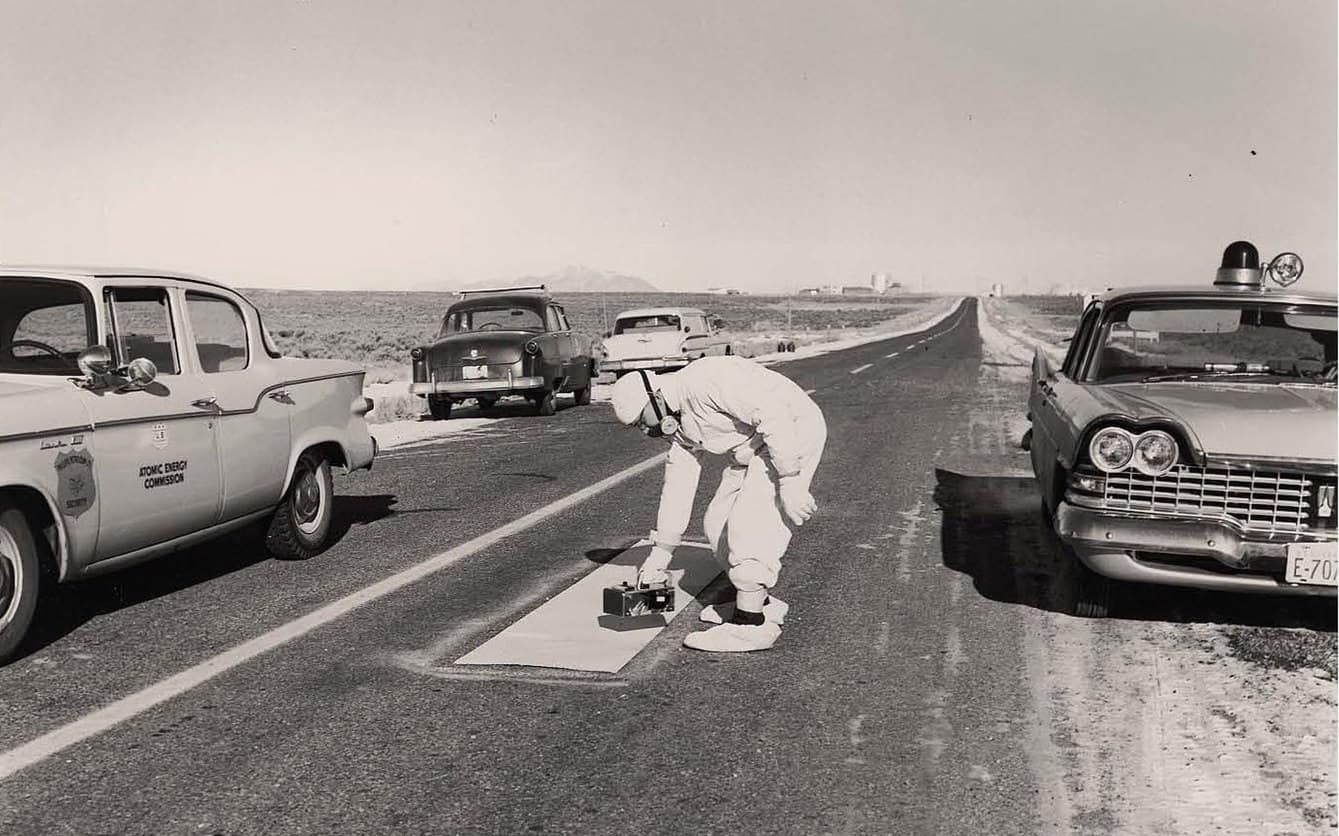
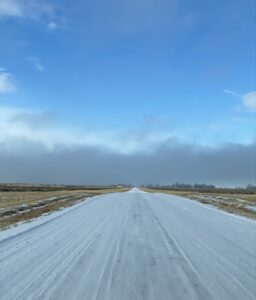
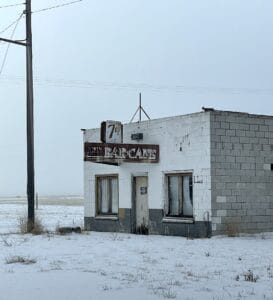
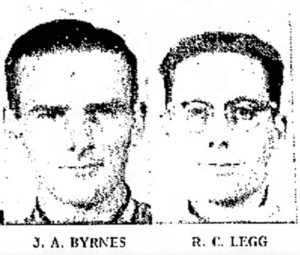
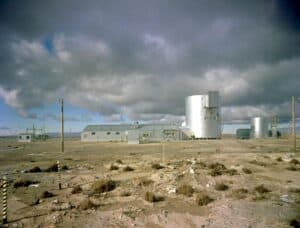

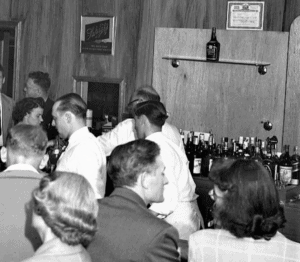
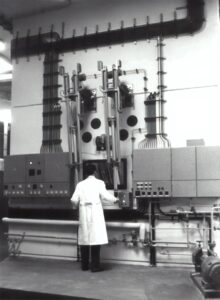
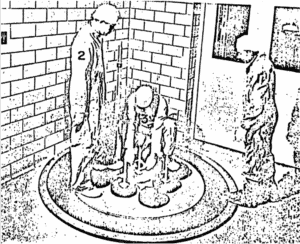
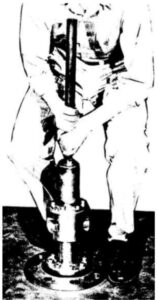
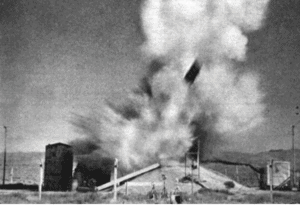
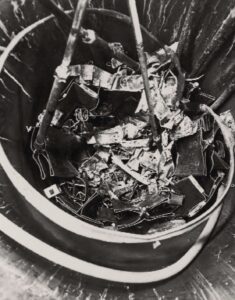
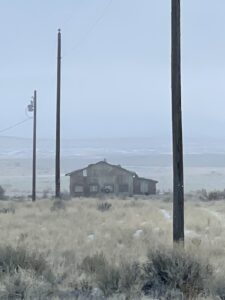
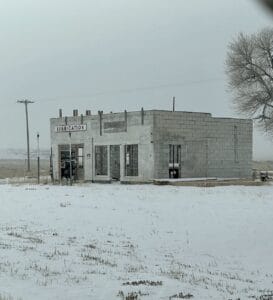
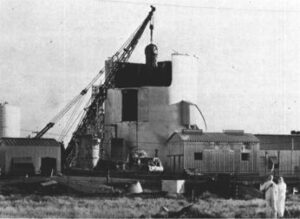
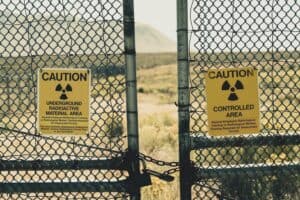
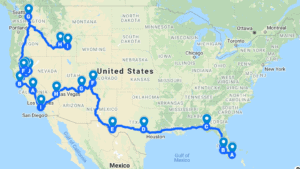
4 comments
Atomic City story sad yet enlightening. Thanks for the writing!
Very interesting tale of a nuclear meltdown. Thanks!
Well written and informative. Unfortunately accidents like this one, is how change comes about in the government sector.
Very informative & well written. I had never heard of the Atomic City incident.